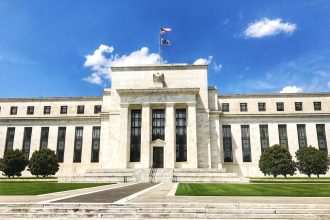OBSERVATIONS FROM THE FINTECH SNARK TANK
JPMorgan Chase announced a new business unit, Chase Media Solutions, that will enable advertisers to connect directly with the financial institution’s 80 million customers.
Using consumers’ payments data, Chase will display ads on its digital properties—e.g., website and mobile apps—from advertisers who provide products and services that Chase consumers have already purchased. Unlike other advertising models, advertisers will only pay for the ads when a consumer makes a purchase.
The launch of Chase Media Solutions follows the integration of Figg, a card-linked marketing platform acquired by JPMorgan Chase in 2022 as part of the bank’s effort to develop its own two-sided commerce platform.
Privacy Concerns Are Overblown and Misunderstood
The initial reaction to the news brought a round of misguided privacy concerns and criticism in the press and on social media from critics accusing Chase of “selling” consumer data to advertisers.
Advertisers won’t get or even see individual customer data or transaction history. The bank will simply display ads to its customers based on their previous purchases.
Chase Media Solutions is a Stroke of Genius
This is a good move on Chase’s part because:
- Chase gets paid twice. Chase will get paid by the advertiser when a sale is made and then collect the interchange fee for the sale on top of that. It’s still an appealing deal for advertisers because—unlike other ad approaches—they only pay when the customer makes a purchase.
- Payment loyalty improves. The proliferation of payment methods—and the increased use of digital wallets among younger consumers—has made it harder for financial institutions to maintain consumers’ payment loyalty. Every sale Chase makes through its Media Solutions group is a payment that might have been made on some other provider’s account—or not made at all.
- Pricing flexibility. Another reason this is (or could be) a stroke of genius is that the new advertising service could enable Chase to bundle pricing for the advertising with interchange fees, obfuscating the difference and enabling the bank to avoid regulatory controls over interchange pricing.
Chase Media Solutions’ Achilles Heels
One potential shortcoming of the new advertising plan is that Chase—even as big as it is—doesn’t have a 360-degree view of its customers’ spending habits.
Today’s consumer spending behavior is so fragmented and specialized that it’s likely that many Chase cardholders only use their Chase card for specific types of purchases—which will limit the range of advertisers any one cardholder will see.
Another potential Achilles heel for the new business unit is consumer behavior regarding interaction with their card providers’ websites and mobile apps.
The new unit’s advertising approach—often referred to as card-linked offers—has been around for years. Bank of America has been doing something like this for years, and with questionable success rates. BofA’s card-linked ads are displayed on its own page on the bank’s mobile app—a page (or section) that isn’t frequently visited.
The challenge for Chase will be making its digital properties more of a destination than just a place to check account balances, transfer funds, and review statements.
What Chase Media Solutions Means to Smaller Financial Institutions
Chase’s new business unit could—and should—force smaller financial institutions to consider and evaluate offering a similar service.
To date, most community banks and credit unions have been hesitant to—or outright against—putting third-party ads on their digital properties. They feel it would be out of sync with their brand and/or would be offensive to their customers and members.
In addition, they think that it wouldn’t be a big money maker. And they’re right—but only in a narrow sense. There’s a bigger opportunity here that smaller financial institutions are overlooking.
You Can’t Out-Chase Chase, But You Can Find Underserved Niches
I often advise banks and credit unions that they “can’t out-Chase Chase.” What does that mean in this case?
Chase Media Solutions’ likely customers will be large, national advertisers looking to leverage Chase’s scope and scale. There’s no way smaller institutions can compete against Chase in that market.
But local businesses and advertisers aren’t going to advertise on Chase’s platforms. Advertising on community-based financial institutions may be a very desirable alternative for those businesses.
Most smaller institutions would look at the direct revenue opportunity from this, conclude it wouldn’t be very large, and pass on offering this kind of service.
But what if it weren’t a standalone service, but something bundled with the institution’s business checking account?
Many small businesses are looking to their banks to not just provide a banking account but to help them manage and grow their business.
A card-linked offer service from community banks or credit union could help them differentiate their core checking accounts or credit card offerings and help bring in new commercial business—which would likely bring in new deposits and loans which banks desperately need these days.
Read the full article here
















